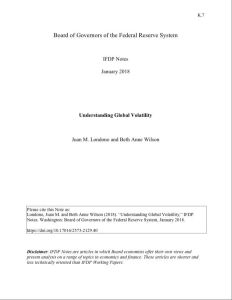Join getAbstract to access the summary!

Join getAbstract to access the summary!
Juan M. Londono and Beth Anne Wilson
Understanding Global Volatility
Federal Reserve Board, 2018
What's inside?
Financial market volatility hit new lows in 2017, and economists are just starting to understand why.
Recommendation
Volatility in both global and US markets fell into a historically low range in the second half of 2017. While this turn of events represented welcome news for risk-averse investors, the unexpected decrease in volatility baffled many economists. Federal Reserve Board researchers Juan M. Londono and Beth Anne Wilson examine international volatility and evaluate eight variables as the main components that move its needle. getAbstract suggests this technical and astute analysis to investors, economists and market specialists interested in the vicissitudes of volatility.
Summary
About the Authors
Juan M. Londono and Beth Anne Wilson are economists with the Board of Governors of the Federal Reserve.
















Comment on this summary